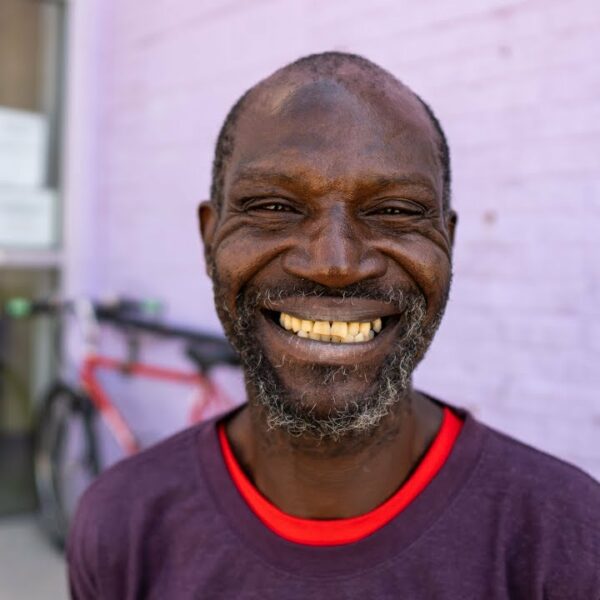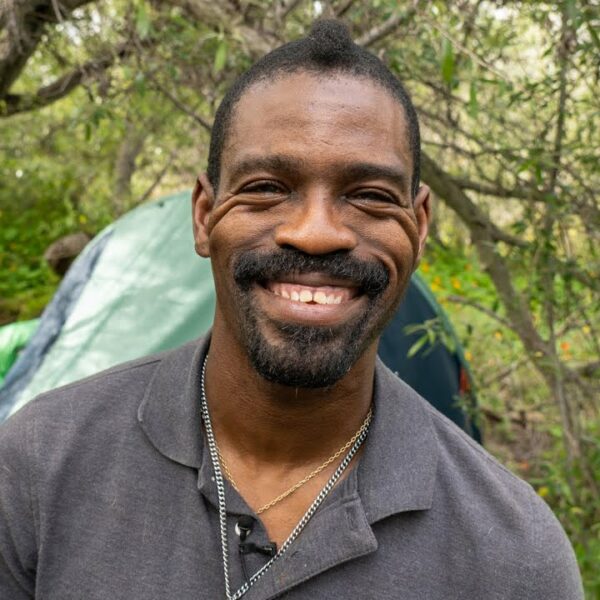Advocates Warn Remote Location Will Isolate People from Jobs, Transit, and Services, Undermining Their Path to Stable Housing
Utah lawmakers are moving forward with a plan to create a large campus outside of Salt Lake City to house and provide services for people who are homeless, an idea that local advocates say is “doomed to fail.”
The facility is intended to provide about 1,300 beds that are “designed to complement the existing homeless resource centers, shelters, and service providers” across the state, according to the project’s official website. It will sit on nearly 16 acres of land outside the Salt Lake City International Airport, and is about a two-hour transit ride from downtown Salt Lake City.
While final plans for the campus are still being worked out, officials have announced some plans that have startled advocates. For instance, the campus could include an “accountability center” where people assigned to that center are not allowed to leave voluntarily. Other aspects, like the “secure residential placement facility”, have some advocates concerned that officials are simply creating a jail for homeless people.
“This model is mean, and it will feel like a jail,” Bill Tibbitts, deputy executive director of Crossroads Urban Center in Salt Lake City, told Invisible People. “But I think it’s more important to highlight that it’s doomed to fail because shelters don’t end homelessness. Housing ends homelessness. Supportive services end homelessness.”
“If you’re concerned about like there being criminals hiding in the homeless population, deal with that in the criminal justice system,” he continued. “Don’t treat everyone who shows up to a shelter like a criminal. It’s just ridiculous.”
A New Direction With Familiar Concerns
The Salt Lake City facility is part of Utah Republican Gov. Spencer Cox’s “sea change” for the way homelessness is addressed in the state.
Earlier this year, Cox said local authorities would begin cracking down on public camping and drug use. At the same time, he said his administration would be investing more in mental health and substance abuse treatment options, as well as increasing jail bed capacity.
The change is happening at a time when President Donald Trump’s administration is calling on local authorities to treat homelessness as a mental health and criminal justice issue. In March, Trump issued an executive order calling on local authorities to use “long-term institutional settings” and “civil commitment” to “restore public order.”
Cox told reporters last week that he is pursuing the Salt Lake homeless facility because other strategies have been a “complete and abject failure,” according to the Utah News Dispatch.
Systemic Causes Are Being Overlooked
As Cox alludes to, there are some significant issues to address in Utah’s homeless services sector.
For example, the state is short about 1,000 shelter beds compared to the number of people who need them, according to Evan Done, advocacy and public policy director of Utah Recovers. There is also a growing number of seniors and families with children who are becoming homeless in Utah, which speaks to the devastating impact that the lack of affordable housing is having on vulnerable households.
But building a massive campus on the outskirts of town is not the right way to address these problems, Done told Invisible People.
“What the state is trying to do here is shift the blame from the system to the individual and say that these people do not want help, or they they’re not ready for help, when, in fact, the real issue is that we don’t have services and systems and supports in place that are the right for the people that are struggling,” Done said.
The design of the facility also seems to be counterproductive, Done added. For example, the location is far from any employment opportunities, which makes it hard to imagine people living there becoming employed. There also appears to be a “work for your bed” setup that could prevent people with disabilities and seniors from benefiting from the facility, he added.
Creating civil commitment procedures could also disincentivize people who need services and shelter from going to the facility, Done said.
There are also concerns about how the facility will be funded. Utah officials have said the facility will be paid for with Medicaid funding, but that may not withstand Trump’s gutting of Medicaid with his “One Big, Beautiful Bill.” The facility could also receive funding from other homeless services grants, which Done said could take money away from current shelter and service providers.
“There’s just a lot of problems that we see, as advocates, with this plan as presented,” he said.
Supportive Services, Not Isolation, Create Stability
The conversation about the Salt Lake City facility has also missed some important aspects, according to Michelle Flynn, executive director of The Road Home, mainly, that the facility seems to be conflated with permanent housing for people who are homeless.
“The piece that’s missing a lot from the recent news is what are we going to do to make sure that people have places to go when they leave?” Flynn told Invisible People.
Shelters are often conflated with permanent supportive housing in debates about homeless services, but those arguments miss a few key distinctions. For instance, shelters are designed to help people with short-term needs, whereas permanent supportive housing helps people with chronic conditions.
Shelters can also help people transition into permanent housing but should not be considered a long-term solution on their own, Flynn added. To that end, Flynn said there needs to be more discussion about how to move people from the facility, if it is built, to more permanent housing options.
“If we could have a better support system for them, then they wouldn’t end up coming into the shelter,” Flynn said.
Another overlooked aspect of Gov. Cox’s plan is the improved data sharing mechanisms he’s proposed, Flynn said. Cox has proposed ideas to help existing homeless service providers share local data with each other, which Flynn said she supports.
However, the challenges posed by federal funding restrictions and some of the more controversial aspects of the Salt Lake City facility have clouded conversations about improving the existing service system instead of replacing it with a new one.
“We are in a really challenging place,” Flynn said. “There’s a lot of scary things being proposed at the federal level, which is the core of funding for the health care that people need, as well as supportive housing, and I’m well aware of that.”
“At the same time, now is actually an opportunity to get around the table and get some good thoughts and not be scared to come to the table because of the big things that are being said that are really challenging our own best practices and evidence-based practices,” she added.
How You Can Help
Now is not the time to be silent about homelessness in America. Poverty and homelessness are both policy choices, not personal failures. That’s why we need you to contact your officials and tell them you support legislation that:
- Streamlines the development of affordable housing
- Reduces barriers for people experiencing homelessness to enter permanent housing
- Bolsters government response to homelessness
Together, we can end homelessness.













